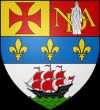City of Alban: Managing drinking water supplies

The City
The commune of Alban is located in the eastern part of the Tarn department of the Midi-Pyrénées region, with a population of about 1 000 people. The only reservoir providing drinking water to Alban is situated on the hills outside of the village, and is also used by a neighbouring municipality.
The Challenge
The commune of Alban decided to manage not only its main water reservoir remotely and efficiently, but also the village’s two pumping stations. The local authority had to control the correct distribution of the drinking water and its quality, by monitoring chlorine levels. This required the creation of a communication and control system between the main reservoir and the pumping sites, on the one hand, and the technicians in charge of the daily management of the water supplies in Alban, on the other. Finally, such a system had to enable the municipalities’ technicians to access the information from anywhere, instantaneously and in a secured manner.
The Satellite Solution
In 2009, the commune of Alban developed, in partnership with three service providers (1), a system allowing instant flow of information and remote control of the water reservoir and the pumping sites. A satellite modem was placed in the main reservoir and connected to the remote management equipment through a parabolic antenna. Information on the water quality and quantity is generated by automats and transmitted by satellite or radio to a central server, constantly accessible to authorised staff through an internet portal. The bidirectional satellite connection allows for remote, real time activation of the equipment regulating the water flow and to immediately communicate alerts by email or SMS.
The Results
The satellite communication system to manage drinking water supplies enables the commune of Alban to control its main drinking water reservoir and the pumping points, also guaranteeing realtime management and security of information. It also allows for the supervision of the equipment via internet, with no need for visits in the field. Moreover, by installing a satellite antenna, the installation of telephone lines in isolated areas was not necessary and thus avoided bigger expenditure and a more important environmental impact on the territory.
(1) SATMOS (Satellite Monitoring Service), AMDEC (Automatisme Maintenance Développement Electricité Câblage) and SIREA (Solutions en électricité et automatismes).
“The satellite solution enables the technical staff responsible for managing the city’s drinking water supplies to constantly monitor the parameters of the good functioning of the reservoir.” Marin Pousthomis, Mayor of Alban

